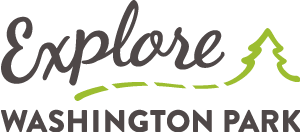Oregon Zoo
Audio Transcript
What is now Oregon Zoo began as a few small animal exhibits in Washington Park in 1888. In 1959, the zoo moved to this location and greatly expanded. The mosaic before you, called “The Continuity of Life Forms,” was installed at what was then the entrance of the zoo. The zoo entrance moved up the hill in the late 1990s to coincide with the opening of TriMet’s MAX light rail tunnel and station, and the mosaic was mostly unseen for many years.
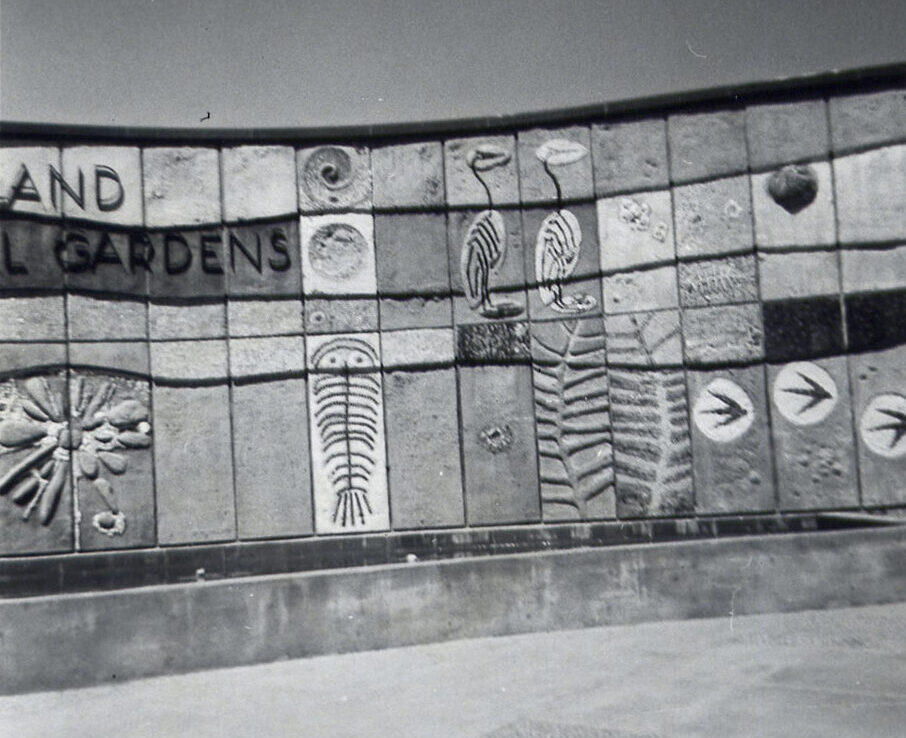
“In 1959, the zoo moved to this location and greatly expanded.”
The panels were carefully removed and stored during construction of the zoo’s Education Center, then restored and installed here when the building opened in 20-17, in nearly the same spot as it had been originally. The multi-paneled mosaic was a significant early work in the career of Willard Martin, a noted local artist and architect best known for designing Pioneer Courthouse Square. The 20 panels form a work roughly 60-feet long and 15-feet tall and capture a panoramic sense of history and being –the forces of life –out of footprints, seeds, leaves, shells, fossils and primitive life forms that might be found in the earth’s strata.
Learn more about the Oregon Zoo at oregonzoo.org
Discovery Points
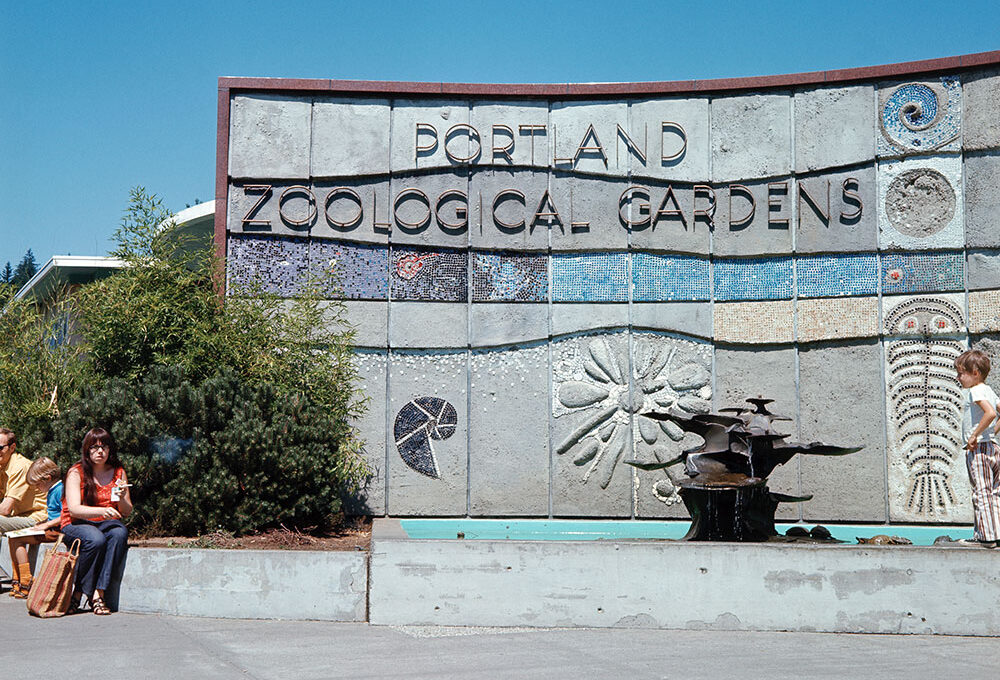
Oregon Zoo
Home to nearly 2,000 animals representing more than 200 species from around the world. From education programs to on-the-ground conservation efforts, the zoo is working to save species regionally and worldwide.

Washington Park MAX Station
In 1998, TriMet built the Washington Park MAX Station, which is the deepest transit station in North America at 260 feet below ground. It’s also the only underground station in the entire MAX system.
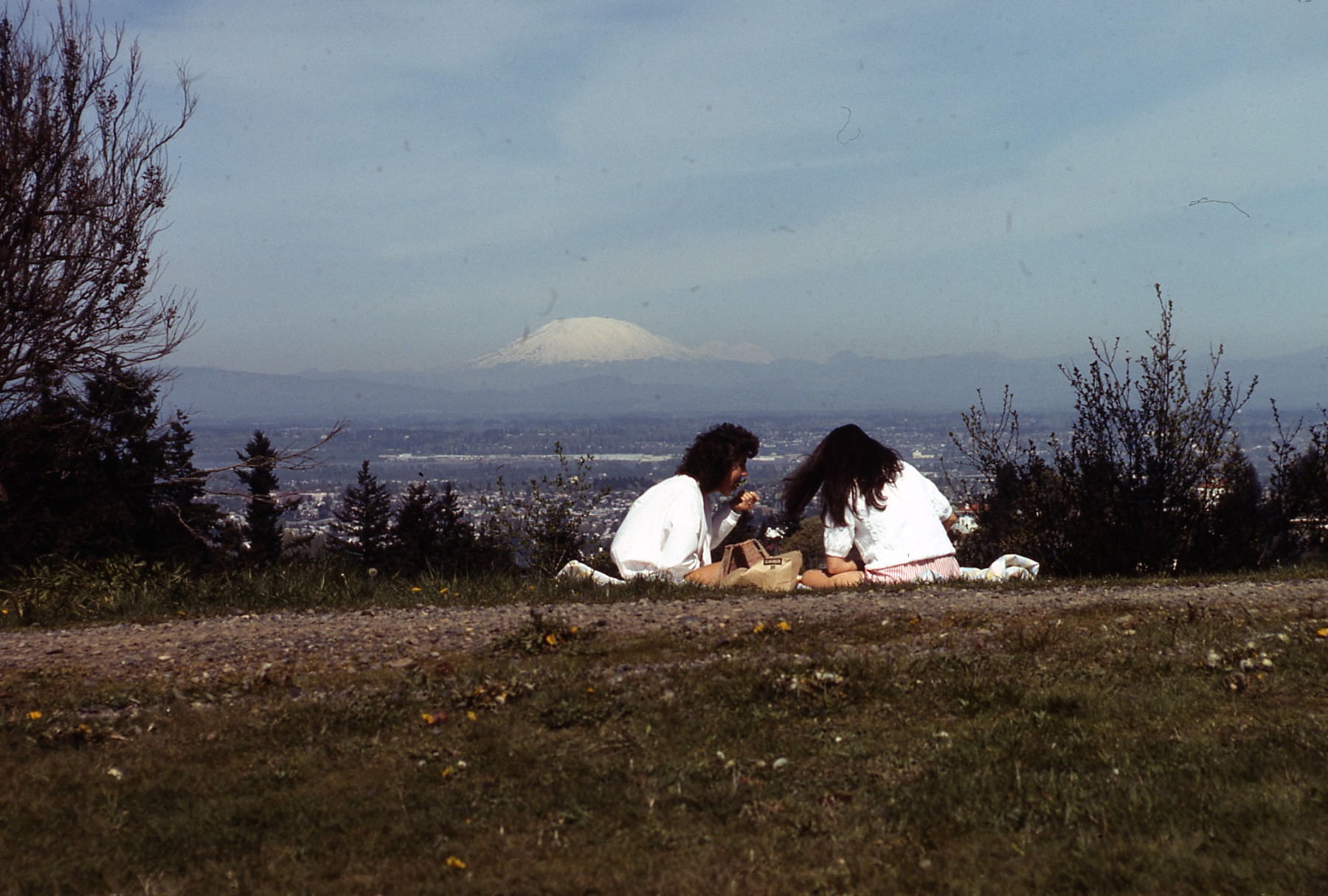
Hoyt Arboretum
Founded in 1928 to conserve endangered species and educate the community, Hoyt Arboretum encompasses 190 ridge-top acres and 12 miles of hiking and biking trails just minutes from downtown Portland.
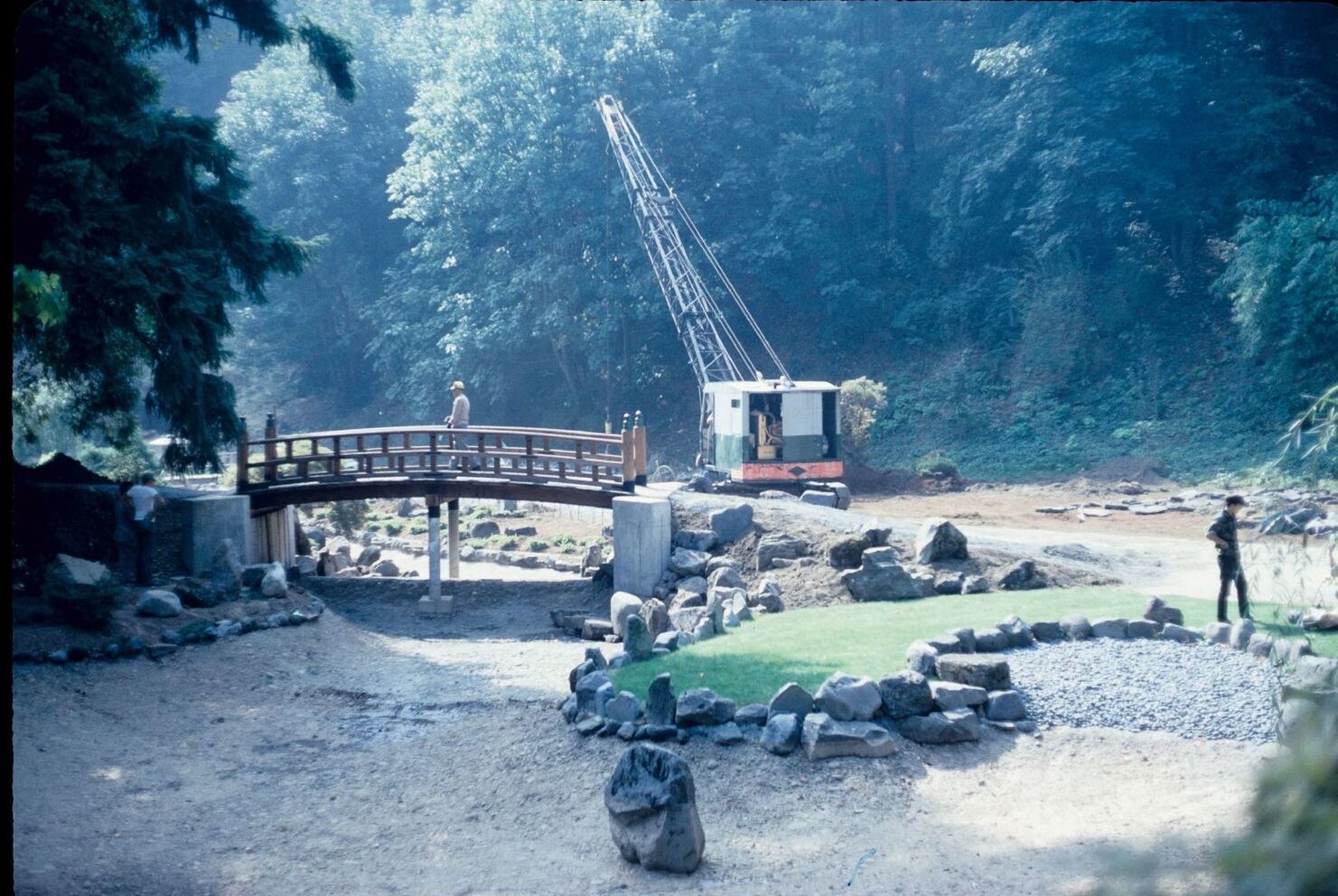
Portland Japanese Garden
The Japanese garden was created in Portland nearly 60 years ago and has become a hallmark of the community today.

World Forestry Center
We think of forests as ancient and unchanging, but in the inland West the forests we see today look nothing like those of 150 years ago.

International Rose Test Garden
The International Rose Test Garden was founded in 1917 and is the oldest continuously operated public rose test garden in the United States.

Historic Stearns Canyon
Established in the 1800s, Washington Park is one of Portland’s oldest parks. The Park’s name, size, and entrances are among its many attributes that have evolved over the years.
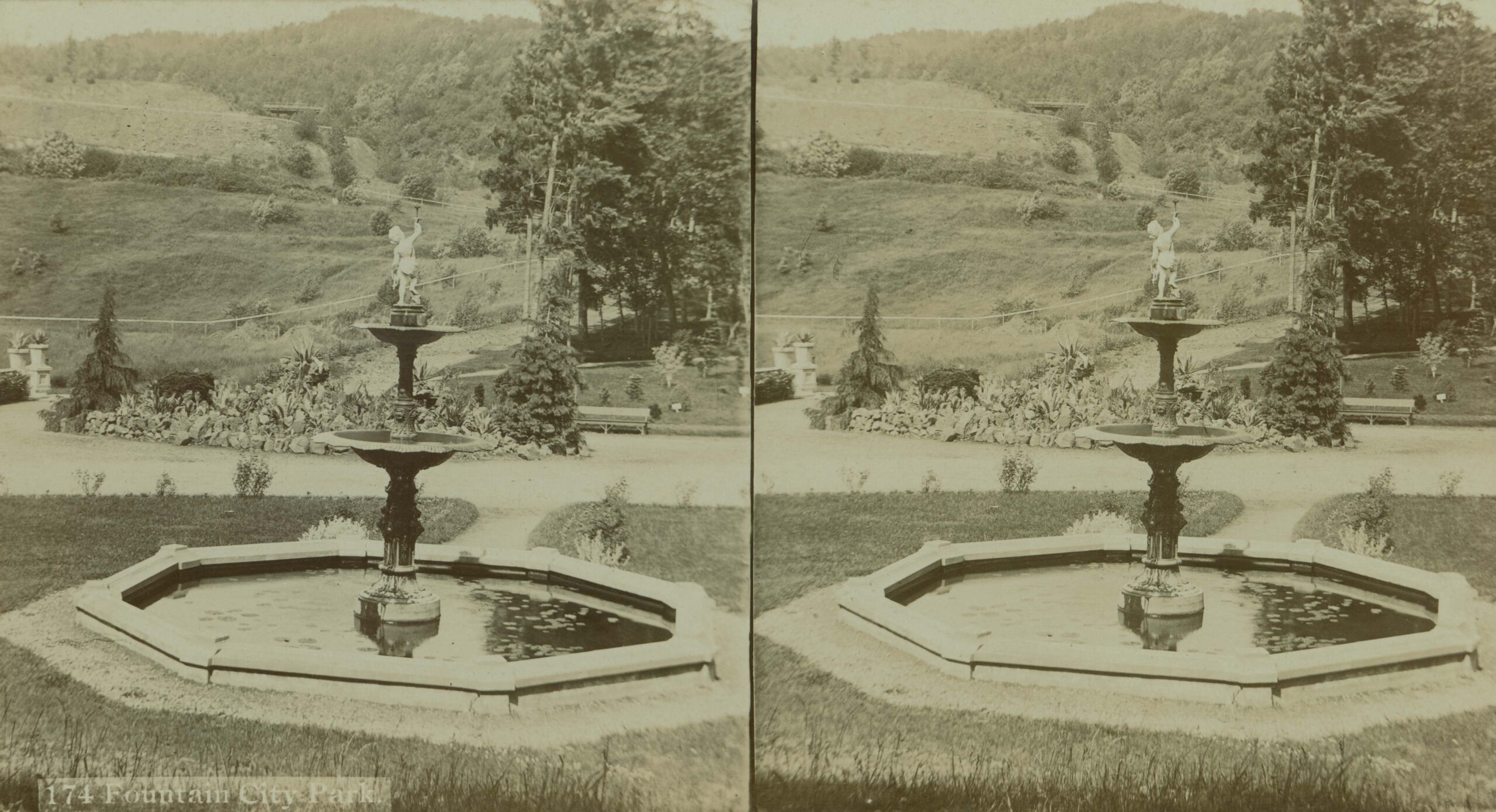
Chiming Fountain
One of Portland’s original pieces of public art is still on display today in Washington Park. The Chiming Fountain is located in what is considered to be Washington Park’s main circle.

Vista Points
Washington Park, originally called City Park, has been well-loved by its caretakers past and present. The stewards of the Park and how they approach and influence its care have evolved.

Dawn Redwood
Hoyt Arboretum has a collection of coast redwoods that are over 150’ tall and were the first trees planted in the arboretum in 1931.

Explore & Connect
Explore over 150 years of Washington Park, originally called City Park, and its many destinations by virtually visiting the featured Discovery Points. Each Discovery Point connects you to history, photos, and community members’ stories.
